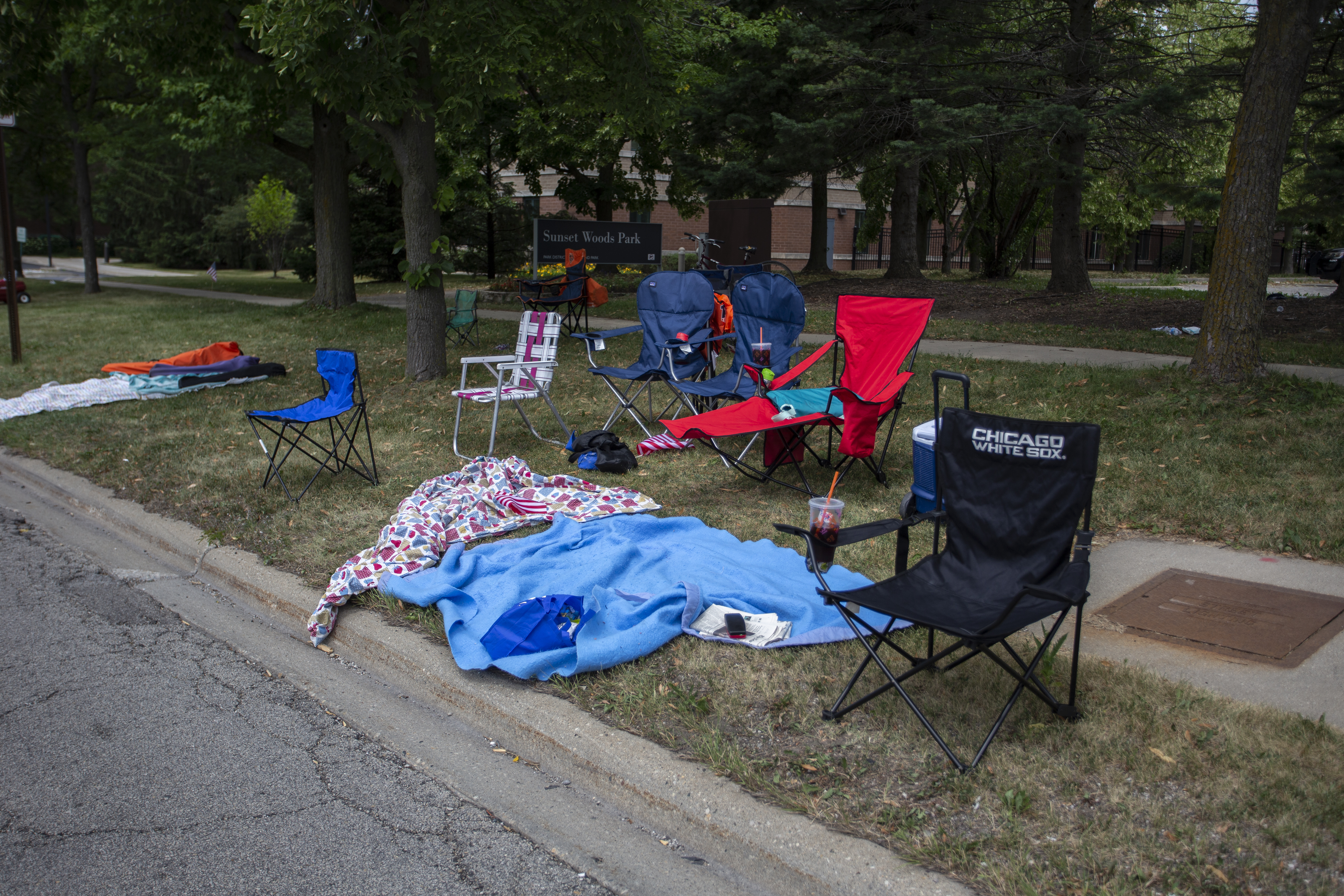With the 2024 solar eclipse just over a week away, preparations are well underway for the event that draw hundreds of thousands of tourists towards areas in the path of totality.
Although the Chicago area is not located in the path of totality, the region will still experience an estimated 94% totality, a higher number than what was seen in the area for the August 2017 solar eclipse.
For those hoping to get a good look at the phenomenon on April 8, solar eclipse glasses will be necessary to protect your eyes from irreversible damage.
Because the region is not in the path of totality, glasses will be needed at all times during the eclipse to safely view it. A solar eclipse is only safe to view without glasses during 100% totality.
According to the Adler Planetarium, viewing the solar eclipse without glasses can result in irreversible eye damage within seconds, and as your eyes lack the nerve endings to register pain as it's occurring, it'll be too late by the time you know.
Regular sunglasses, even very dark ones, are not safe to view the eclipse.
Outside of eclipse glasses, the following options described by the Illinois Department of Transportation also offer a safe way to see the event.
- Solar filters: If you want to use a telescope, binoculars or camera, do not use them unprotected even if you have safe eclipse glasses. Consult the manufacturer for a proper filter to attach to your device.
- Pinhole viewer: This is a simple, inexpensive way to indirectly view the eclipse. Just take two sheets of white paper (card stock is best) and poke a hole in the middle of one sheet. With your back to the sun, hold the sheet with the hole over the other sheet and adjust them until you see a dot of light. That's the sun! As the moon travels across the sun, a crescent will appear.
With the danger of irreversible eye damage present in the event of viewing the eclipse unprotected, it's critical to ensure that the solar eclipse glasses used are not counterfeit.
Local
Feeling out of the loop? We'll catch you up on the Chicago news you need to know. Sign up for the weekly Chicago Catch-Up newsletter.
However, there's no real way to detect real glasses versus counterfeit ones just by looking at them.
"The glasses if they're counterfeit, they may appear fine, because maybe they're dark enough that you can that it appears like you can safely look at the sun. But what you don't know is are they letting through ultraviolet and infrared light. That's the thing that I would worry about the most," Michelle Nichols, director of public observing at the Adler Planetarium said.
Detecting real vs. fake becomes even more challenging when companies tout unproven or inccurate safety claims.
"Just be careful and don't just assume just because it says safe glasses that that they actually are because anyone can write that," she said.
Where can I find safe eclipse glasses?
Experts suggest purchasing solar eclipse glasses through suppliers deemed "safe" by the American Astronomical Society.
The society's list offers links to "selected suppliers of solar viewers and filters that you can be confident are safe when used properly."
"These include companies and organizations with which members of the AAS Solar Eclipse Task Force have had good experience as well as other companies and organizations that have demonstrated to our satisfaction that the products they're selling meet the safety requirements of the ISO 12312-2 international standard," the list states.
The society notes, however, that its list is not exhaustive, and glasses not listed on the site could still be safe. They do not recommend using Amazon, eBay, Temu or other online marketplaces to find lowest-priced options.
"Before you buy a solar viewer or filter online, we recommend that you make sure that (1) the seller is identified on the site and (2) the seller is listed on this page," the society states.
According to Space.com, ISO-approved solar eclipse glasses must meet the following safety requirements:
- No more than 0.00032 percent of the sun's light may be transmitted through the filters.
- The filters must be free of any defects, such as scratches, bubbles and dents.
- Handheld viewers must be large enough to cover both eyes.
- Labels on the viewers (or packaging) must include the name of the manufacturer, instructions for safe use and warnings of the dangers of improper use.
What if you still have glasses from previous solar eclipses?
For those who still have glasses from the last solar eclipse, those could still be good. Nichols said they could still be usable.
"If folks have materials leftover from 2017, as long as those were legit and purchased from a legit vendor in 2017, you can just check it by shining a bright flashlight through it," she said. "Just make sure there's no pinholes or punctures or tears or rips or anything."
If you're not sure, Nichols said it's best to not risk it.
"When in doubt, throw it out. You don't want to take any chances with with your eyesight," she said.



